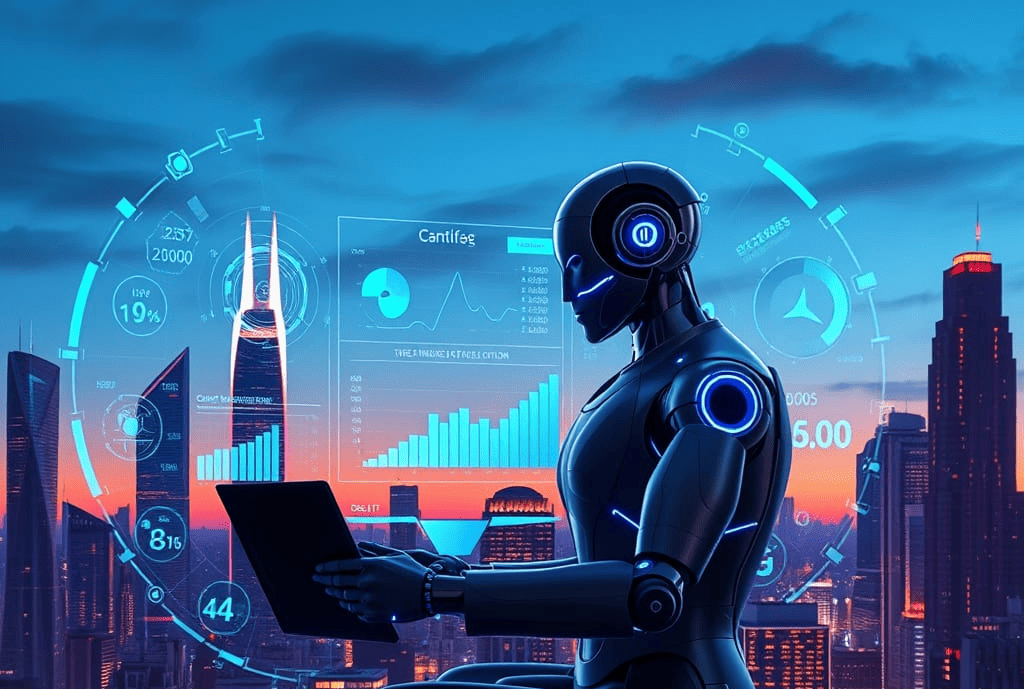Introduction
As we move into 2025, businesses are increasingly relying on Big Data to drive decisions, innovations, and competitive advantage. Emerging technologies such as AI, edge computing, and cloud-native platforms are transforming how companies store, process, and analyze massive datasets. To remain competitive, organizations must stay ahead of these trends and adopt cutting-edge technologies to harness the full potential of Big Data.
In this article, we’ll explore the most critical Big Data trends and technologies that businesses should watch in 2025.
1. AI and Machine Learning Integration with Big Data
Why It Matters
By 2025, AI and Machine Learning (ML) will be essential for data analysis, predictive modeling, and automation. For example, Google’s AI-driven BigQuery platform has reduced data processing times by over 50%, streamlining real-time analytics. Businesses will increasingly rely on AI-driven insights to personalize customer experiences, optimize operations, and enhance cybersecurity.
Key Developments
✔ Automated Data Processing: AI will enhance the speed and accuracy of data extraction.
✔ Predictive Analytics: ML algorithms will provide real-time business insights based on historical trends.
✔ Personalization: AI will enable hyper-personalized recommendations and marketing strategies.
📌 Example: Retailers using AI-driven analytics to optimize inventory and predict consumer demand based on historical shopping patterns.
2. Edge Computing for Real-time Data Processing
Why It Matters
Edge computing brings data processing closer to the source, reducing latency and enabling real-time decision-making—a necessity for industries like healthcare, manufacturing, and autonomous vehicles.
Key Developments
✔ Faster Data Processing: Reducing dependence on centralized cloud servers.
✔ Enhanced IoT Capabilities: Supporting real-time data collection and automation.
✔ Reduced Costs: Optimizing bandwidth and reducing cloud storage expenses.
📌 Example: Smart farming solutions use edge computing to analyze soil conditions and optimize irrigation systems in real time.
3. Cloud-Native Big Data Platforms
Why It Matters
Businesses are shifting to cloud-native Big Data platforms for scalability, cost efficiency, and enhanced analytics capabilities.
Key Developments
✔ Seamless Cloud Integration: More companies will migrate data workloads to AWS, Google Cloud, and Azure.
✔ Serverless Data Processing: Increasing adoption of serverless architectures for data storage and analytics.
✔ AI-Powered Cloud Analytics: Enabling more sophisticated insights from large datasets.
📌 Example: Financial institutions using cloud-native analytics to detect fraud and prevent security breaches.
4. Data Privacy and Security Enhancements
Why It Matters
Regulatory frameworks like GDPR, CCPA, and new global laws are shaping how businesses collect, store, and manage sensitive data.
Key Developments
✔ Advanced Encryption Methods: Protecting data integrity and privacy.
✔ Decentralized Data Architectures: Reducing security risks and single points of failure.
✔ Privacy-enhancing Technologies (PETs): Secure multi-party computation and federated learning.
📌 Example: Healthcare providers using secure, encrypted patient records to comply with data privacy regulations.
5. Automated Data Management and Governance
Why It Matters
With the growing volume of structured and unstructured data, companies are adopting automated governance systems to ensure data accuracy, compliance, and accessibility.
Key Developments
✔ Data Lineage Tracking: Automating the tracking of data movement and transformation.
✔ AI-driven Data Cleaning: Detecting and fixing data inconsistencies automatically.
✔ Self-Regulating Compliance Tools: Ensuring adherence to global data laws.
📌 Example: Enterprises using AI-powered governance tools to automatically detect anomalies and improve data quality.
6. Data Democratization and Self-Service Analytics
Why It Matters
By 2025, self-service analytics platforms will empower employees across all departments to access, analyze, and act on data insights without IT dependency.
Key Developments
✔ Intuitive Business Intelligence Tools: Expanding the use of self-service dashboards.
✔ AI-driven Data Insights: Providing natural language processing (NLP) interfaces for querying datasets.
✔ Empowered Workforce: Enabling faster, data-driven decision-making across organizations.
📌 Example: Marketing teams using self-service analytics dashboards to track campaign performance in real time.
7. The Rise of Quantum Computing in Big Data
Why It Matters
Quantum computing promises to revolutionize Big Data processing by solving complex problems exponentially faster than traditional computers.
Key Developments
✔ Parallel Data Processing: Allowing massive datasets to be analyzed in seconds.
✔ Quantum AI Algorithms: Unlocking new optimization and forecasting capabilities.
✔ Early Adoption in High-Impact Industries: Including finance, pharmaceuticals, and logistics.
📌 Example: Financial firms leveraging quantum-driven AI to enhance risk analysis and fraud detection.
dotcode: Your Big Data Innovation Partner
At dotcode, we help businesses stay ahead of Big Data innovations by providing cutting-edge AI, cloud, and analytics solutions.
✅ Custom Big Data Applications: Tailored platforms for advanced data analysis.
✅ Cloud Integration: Seamless deployment on AWS, Google Cloud & Azure.
✅ Real-Time Data Processing: AI-powered automation for faster decision-making.
✅ Secure Data Management: Compliance-focused privacy and encryption solutions.
FAQs: The Future of Big Data
1. How will AI shape Big Data in 2025?
AI will automate data processing, improve predictive analytics, and enhance decision-making.
2. What industries will benefit the most from Edge Computing?
Industries like healthcare, manufacturing, IoT, and autonomous vehicles will benefit from low-latency data processing.
3. What is the biggest challenge in Big Data security?
Ensuring data privacy compliance and preventing cyber threats through advanced encryption and governance tools.
4. How can businesses prepare for Quantum Computing?
Companies should invest in research partnerships, explore quantum-safe cryptography, and evaluate early adoption opportunities.
Conclusion
The future of Big Data is fast-evolving, driven by AI, cloud-native platforms, edge computing, and quantum technologies. Businesses must focus on integrating these trends to stay competitive in an increasingly data-driven economy. Businesses that embrace these innovations will stay ahead of the competition.
🎯 Contact dotcode today for a Free Consultation & Big Data Strategy Session! 🚀






